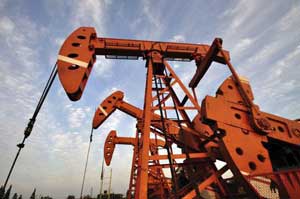Fluoride and bromide in organic compounds
Fluoride refers to organic or inorganic compounds containing negative fluorine. Fluoride is similar to other halogens. Bromides generally refer to binary compounds containing negative bromine.
Fluoride and bromide in organic compounds have similar properties, and there are three main types.
1. Fluoride exchanges halogen with other organic halides.
For example: CCl4 + 2HF–→ CCL2F2 + 2HCl RCL + KF–→ RF + KCl.
Commonly used fluorinating agents are potassium fluoride, antimony trifluoride, antimony pentafluoride, mercury fluoride, hydrogen fluoride, etc. In halogen exchange with fluoride, the order of reaction ability of the three organic halides is iodide > bromide > chloride.
2. Hydrogen in organic compounds is replaced by fluorine in metal fluorides,
For example: RH + 2CoF3– → RF + 2CoF2 + HF.
The commonly used metal fluorides are AgF2, CoF3 and so on.
3. Reaction of fluorine or hydrogen fluoride with hydrocarbons.
For example: CH≡CH + HF– → CH2 = CHF.
Fluorination is carried out directly with fluorine. The reaction is very violent and difficult to control. The reactants must be diluted with a diluent such as nitrogen. Therefore, it is rarely used. In addition, sulfur tetrafluoride can also react with halogenated hydrocarbons, aldehydes, ketones and other compounds to produce organic fluorides. Fluorination is an irreversible exothermic reaction.
According to the phase state, there are two types.
1. Liquid phase method. Antimony fluoride was used as catalyst. It is usually carried out in a kettle reactor with agitator.
2. Gas solid catalytic method. Aluminum fluoride or chromium fluoride was used as catalyst. Fixed bed reactor or fluidized bed reactor is used. Fluorination is used to produce organic fluorides, such as chlorofluoromethane, chlorofluoroethane (see Freon), tetrafluoroethylene, vinyl fluoride, vinylidene fluoride, hexafluoropropylene, etc.
Due to the high thermal stability (often showing chemical inertia) and non-toxic properties of organic fluorides, the fluorination process has attracted more and more attention.
What are the bromides in life?
It generally refers to the binary compounds containing bromine in – 1 oxidation state. It includes metal bromide, nonmetal bromide and ammonium bromide. Alkali metal, alkaline earth metal bromide and ammonium bromide are easily soluble in water. Insoluble bromides are similar to insoluble chlorides, but the solubility of the former is usually less than that of the corresponding chlorides. The aqueous solution of hydrogen bromide is called hydrobromic acid, which is a strong acid. There are also some brominated halogen compounds, such as iodine bromide (IBR). Bromides of alkali and alkaline earth metals can be prepared by the reaction of corresponding carbonates or hydroxides with hydrobromic acid.
Such as: manganese bromide, barium bromide, copper bromide, magnesium bromide, thallium bromide, mercury bromide, chlorine bromide, benzyl bromide and so on.






